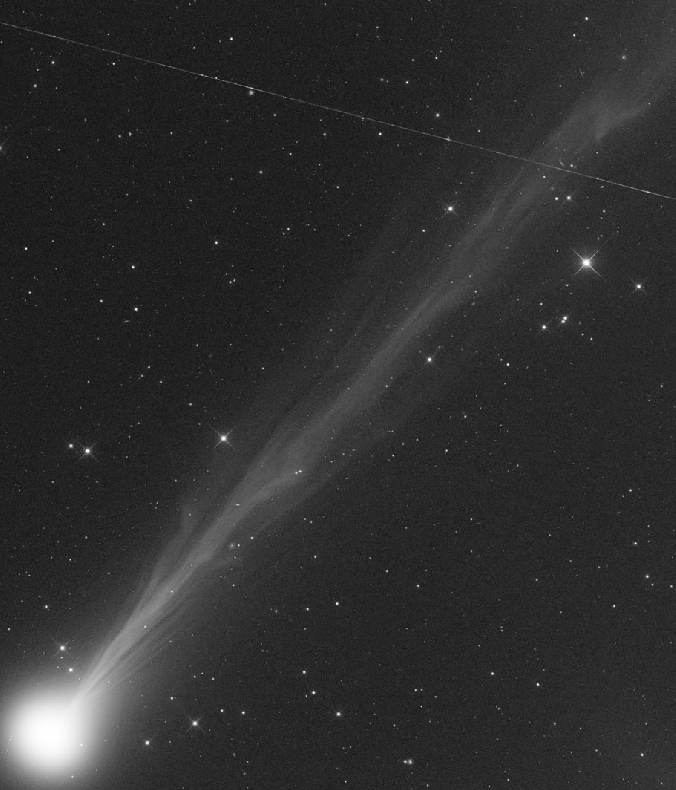May 6, 2020: What just happened to Comet SWAN (C/2020 F8)? The newly-discovered comet surprised observers this week when it suddenly became visible to the unaided eye. “My wife Deborah and I have seen it several times since April 30th,” reports Stephen James O’Meara from Maun, Botswana. “Even the tail is visible with keen averted vision.”
What happened? It might have fragmented, exposing bright clouds of dusty gas to the sun. Certainly the comet’s tail looks like debris from an explosion:

Gerald Rhemann of Farm Tivoli, Namibia, recorded this movie on May 1st using a 12-inch telescope. The footage spans 42 minutes
But Karl Battams of the Naval Research Lab in Washington DC doesn’t think so. “Outbursts do not necessarily imply fragmentation, and ground-based images are not yet showing evidence of a breakup.”
“This could just be a particularly feisty and volatile comet,” he adds, hopefully.
Comet SWAN was discovered on April 11th when Australian amateur astronomer Michael Mattiazzo noticed a curious “bloom” in images from SOHO’s SWAN instrument. SWAN surveys the solar system for hydrogen gas, and it caught the comet making a sudden hydrogen dump. That might have been Comet SWAN’s first outburst.
A second outburst starting in late April turned it into a naked eye object:

Fresh comets often behave this way–cracking, fracturing, and exposing veins of volatile material as they approach the sun for the first time. Comet SWAN is just such an object. It has a hyperbolic orbit, which suggests it has never been here before. Sunlight is touching its surface for the first time with unpredictable results.
More outbursts could be in the offing. Dates of special interest include May 12th when the comet passes by Earth (0.56 AU) and May 27th when the comet slingshots past the sun not far from the orbit of Mercury (0.43 AU).
“It would not surprise me at all to see another outburst – maybe several – in the coming weeks as it closes in on the sun later this month,” says Battams.
Stay tuned!
Observing Tips: To see Comet SWAN, it helps to be in the southern hemisphere. However, that will change in the nights ahead as SWAN moves rapidly northward. This week, observers in the southern USA could get their first glimpse of the comet very low in the eastern sky during morning twilight as it speeds from Cetus into Pisces. Detailed sky maps are available from Sky&Telescope. Amateur astronomers with GOTO telescopes can use this ephemeris tool to point their optics.
Realtime Comet SWAN Photo Gallery
Free: Spaceweather.com Newsletter